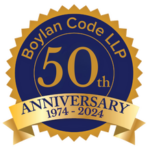A simple bequest in your will is not enough to ensure lawful transfer of a firearm at your death. There are several hoops your executor and beneficiary will have to jump through to make sure the bequest is successful. You will want to make sure they are both as prepared as possible.
Legal firearm ownership has been surrounded by red tape in New York state for decades. The NY SAFE Act increased some of that red tape, making it difficult to transfer firearms, especially “assault weapons” defined by NY Penal § 265.00.
The policy behind gun control legislation in New York has consistently been to remove dangerous weapons from the stream of commerce in our state. The legislature accomplishes this by making it procedurally complex to transfer weapons from one person to another. The law must be followed to the letter to protect parties from potential criminal liability.
Furthermore, a firearm which is part of an illegal transaction, or is owned illegally, is considered a “nuisance” and may be seized by the state and destroyed, thus removed from the stream of commerce.
If an executor gives a firearm directly to the intended beneficiary, without a) knowledge of whether the decedent legally owned the weapon, b) knowledge of whether the beneficiary may legally own the weapon, and c) adherence to proper transfer procedures, the executor is taking an unnecessary risk which could have serious consequences.
When the procedures are followed, there are no risks of criminal liability or of losing the weapon. With some knowledge of the law and some careful planning and execution, you should be able to transfer a firearm at death, legally, without the consequences mentioned in this article.
It is not difficult to be charged and convicted of criminal possession of a weapon in the fourth degree. The crime is a Class A misdemeanor, and is punishable by up to one year in jail or three years of probation, plus a $1,000 fine. A person is guilty of NY Penal § 265.01, criminal possession of a weapon in the fourth degree, if he is “in possession of a firearm,” unless he falls into one of the exceptions described below.
There is no mental component to this crime, all that is required is possession. The intentions of the defendant to use or not to use the weapon do not factor into the conviction, nor does knowledge of the possession. Lack of knowledge may be asserted as a defense, but the defendant is presumed to have knowledge of his possession if no defense is raised. The prosecutor must simply show that the defendant had the firearm in his possession.
The presumption is that the possession is illegal, unless one of the exceptions under NY Penal § 265.20 is asserted, which would include proper licensure of the individual and registration of the weapon. If the defendant has been previously convicted of any crime, he may be charged with criminal possession of a weapon in the third degree, a class D felony.
NY Penal § 265.20 lays out all “exceptions to possession,” meaning it designates when possession of a firearm is not a crime. An exception for executors and beneficiaries is specifically carved out in the provision. An executor or beneficiary may possess the firearm for up to 15 days without incurring liability for criminal possession of a firearm. During those 15 days, the executor or beneficiary must either dispose of it lawfully, as described below, or turn it over to the police by the end of the time period for safe keeping.
Once the firearm is transferred to the police, they must keep it safe for up one year. The executor or beneficiary may request the firearm be delivered to someone who is legally able to possess it, such as a licensed firearms dealer or a properly licensed beneficiary. If a written request is not received within one year, the police may dispose of the weapon, either by destroying it or transferring it out of New York state.
If an executor or beneficiary is not aware of these laws and how they apply, he could easily get into trouble. For example, an executor who has limited knowledge of guns may find a firearm at a decedent’s home and not realize that it is the type of gun that is regulated by New York as a firearm. Or perhaps the firearm’s intended beneficiary will not be available to pick it up for over a month, or the intended beneficiary is in the process of obtaining his or her license to possess the firearm.
If the executor possesses the firearm for more than 15 days without “lawfully disposing” of it, he may be criminally liable for that possession and he risks losing the illegally-possessed weapon altogether. “Disposing” of a firearm includes giving the weapon away, leasing it, selling it, offering it for sale, transferring it, or keeping it for sale under NY Penal Law § 265.00. Lawfully disposal of a firearm involves working with a licensed gun dealer to sell, give or otherwise transfer the weapon to someone who is licensed to own it.
Some guns are not considered “firearms” under NY Penal Law § 265.00, and thus they may be transferred freely, without a licensed gun dealer’s oversight. This includes rifles with barrels over 16 inches in length, shotguns with barrels over 18 inches in length, and antique firearms. Antique firearms are defined narrowly in New York state as “any unloaded pistol or revolver with a matchlock, flintlock, percussion cap, or similar type of ignition system, or a pistol or revolver which uses fixed cartridges which are no longer available in the ordinary channels of commercial trade.” All pistols and revolvers are “firearms.”
Another procedural hurdle for executors to consider is NY SCPA § 2509, which requires a separate “Firearms Inventory” be filed with the court to settle an estate of a decedent who owned firearms. This separate inventory was added by the SAFE Act, as another way to make sure the state can track firearms at every transfer. It is not a complex form, and is merely informational for the court, but does put another item on an executor’s to-do list.
These are some of the traps for the unwary in New York’s gun regulation laws, many of which were present before the SAFE Act. Let your intended executor know if you own a firearm, where it is kept and to whom you would like him to transfer it upon your death. Let him know if you have not properly registered the firearm, so that he can surrender it immediately and avoid criminal liability.
Talk to the intended recipient of the firearm about getting the proper license to own the firearm. Keep in mind that criminal convictions of serious crimes and felonies carry the additional consequences of prohibiting a defendant from obtaining a license to own a firearm, and from possessing any guns, including those that do not fall within the statutory definition of “firearm.” Most importantly, discuss gun-safety practices with both your executor and the intended beneficiary, especially addressing any safety practices that may be unique to your firearm.
Another vehicle that may avoid some, but not all, of the red tape may be a “Gun Trust,” which would own the firearms and allow multiple trustees to use the weapon, as long as each trustee is properly licensed and has not been convicted of any serious crimes. These trusts have been popular tools all over the United States to help simplify transfers of firearms under the National Firearms Act. However, it is not clear yet how gun trusts will be treated in New York state under the SAFE Act.
They may save some time and paperwork, but they cannot make an illegal firearm legal, and they do not allow an individual who is ineligible to own a firearm under the law magically eligible. Ultimately your communication, preparation and knowledge of the law will allow you to set your executor and beneficiaries up for a successful bequest.


